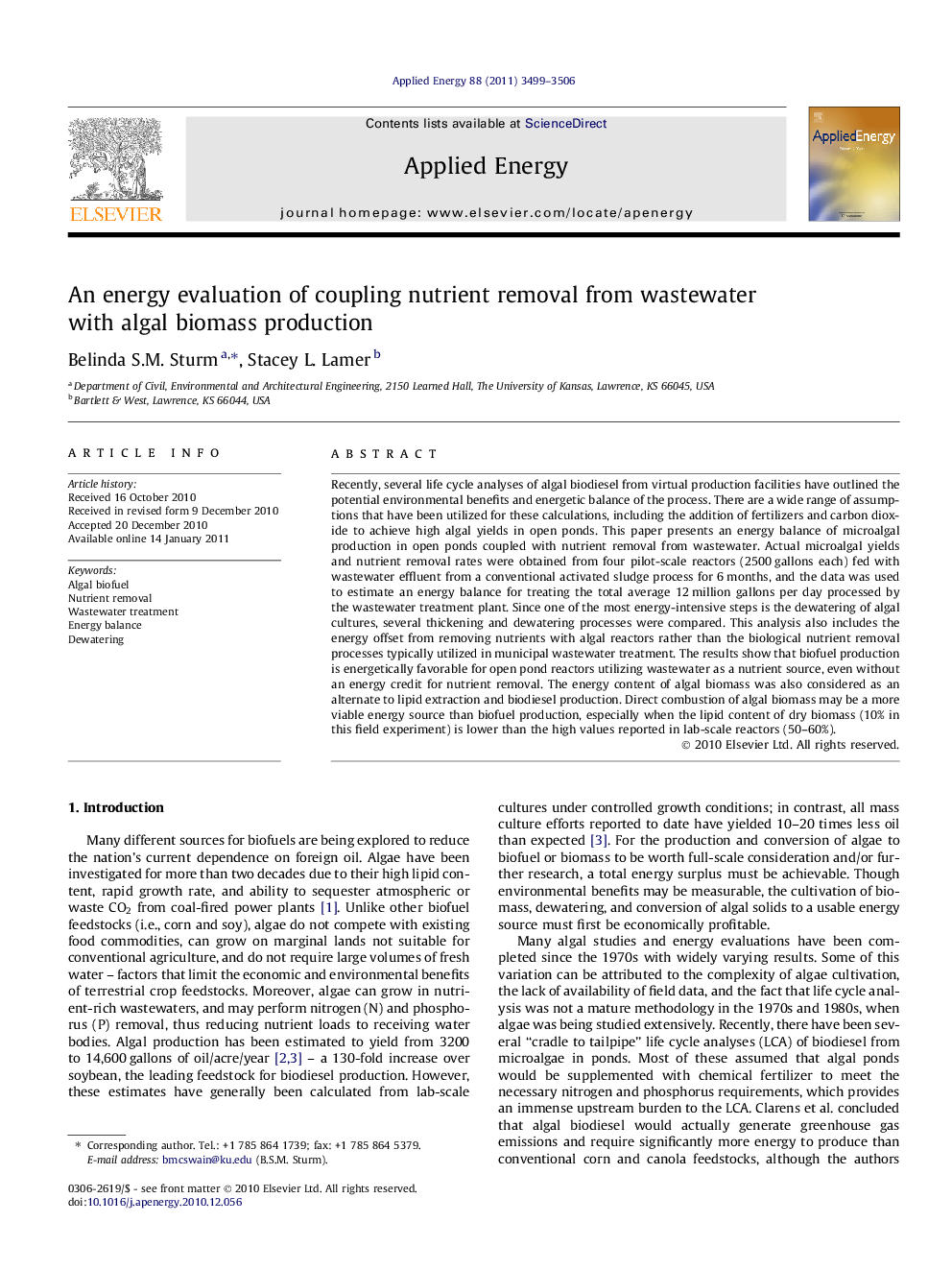| کد مقاله | کد نشریه | سال انتشار | مقاله انگلیسی | نسخه تمام متن |
|---|---|---|---|---|
| 244315 | 501946 | 2011 | 8 صفحه PDF | دانلود رایگان |

Recently, several life cycle analyses of algal biodiesel from virtual production facilities have outlined the potential environmental benefits and energetic balance of the process. There are a wide range of assumptions that have been utilized for these calculations, including the addition of fertilizers and carbon dioxide to achieve high algal yields in open ponds. This paper presents an energy balance of microalgal production in open ponds coupled with nutrient removal from wastewater. Actual microalgal yields and nutrient removal rates were obtained from four pilot-scale reactors (2500 gallons each) fed with wastewater effluent from a conventional activated sludge process for 6 months, and the data was used to estimate an energy balance for treating the total average 12 million gallons per day processed by the wastewater treatment plant. Since one of the most energy-intensive steps is the dewatering of algal cultures, several thickening and dewatering processes were compared. This analysis also includes the energy offset from removing nutrients with algal reactors rather than the biological nutrient removal processes typically utilized in municipal wastewater treatment. The results show that biofuel production is energetically favorable for open pond reactors utilizing wastewater as a nutrient source, even without an energy credit for nutrient removal. The energy content of algal biomass was also considered as an alternate to lipid extraction and biodiesel production. Direct combustion of algal biomass may be a more viable energy source than biofuel production, especially when the lipid content of dry biomass (10% in this field experiment) is lower than the high values reported in lab-scale reactors (50–60%).
Journal: Applied Energy - Volume 88, Issue 10, October 2011, Pages 3499–3506